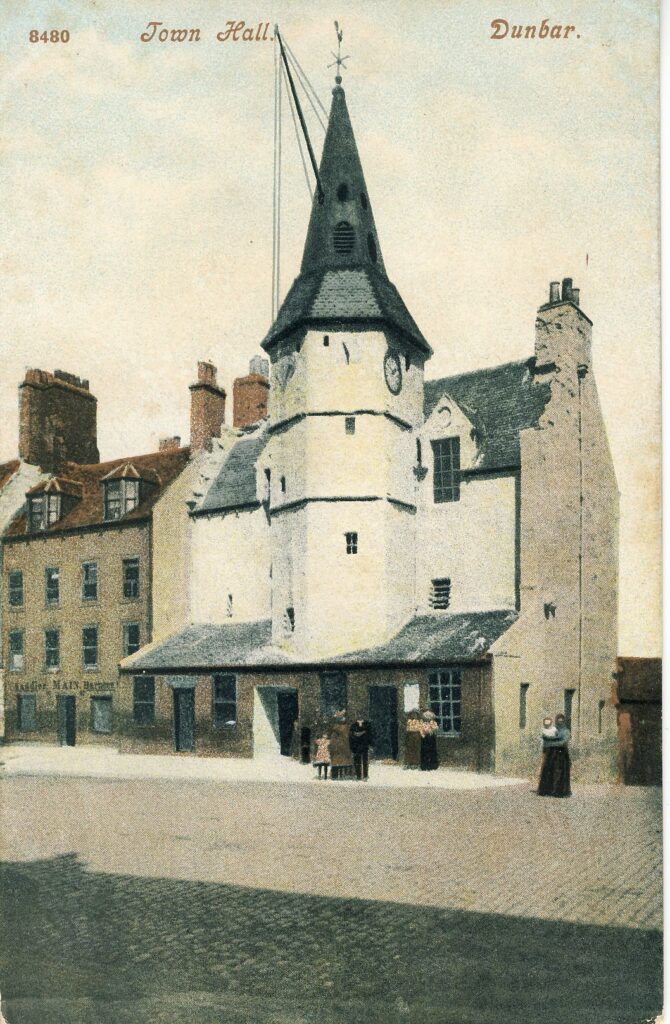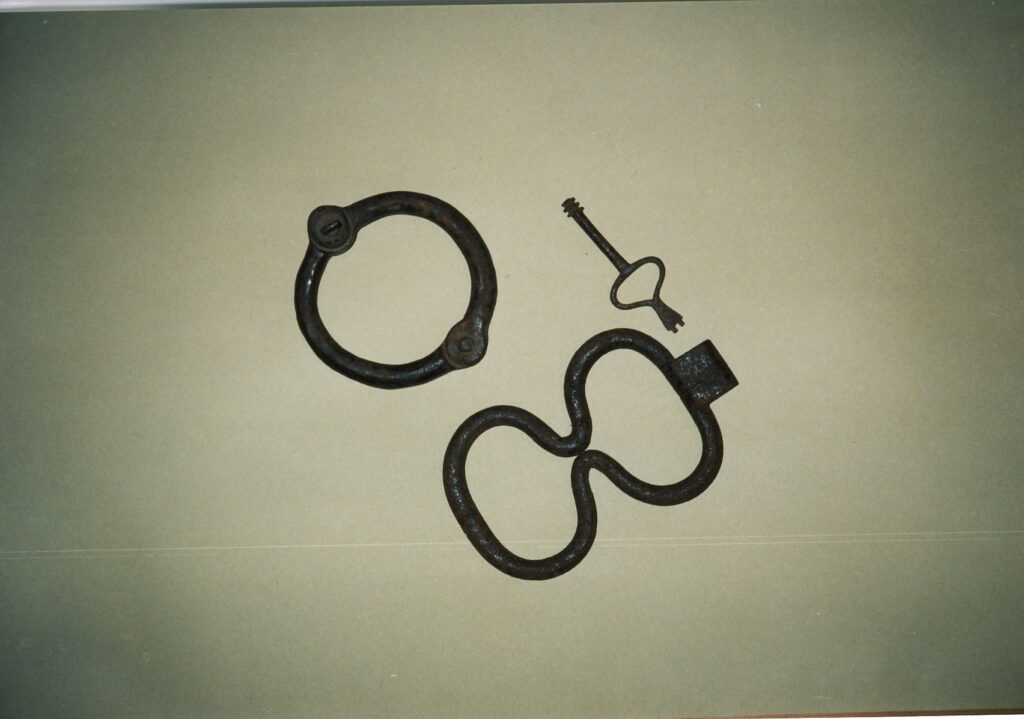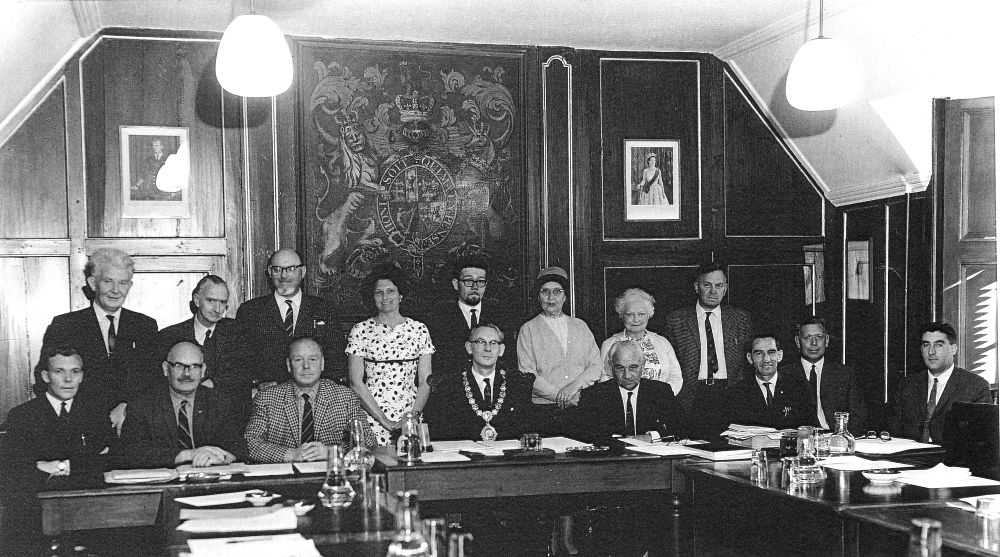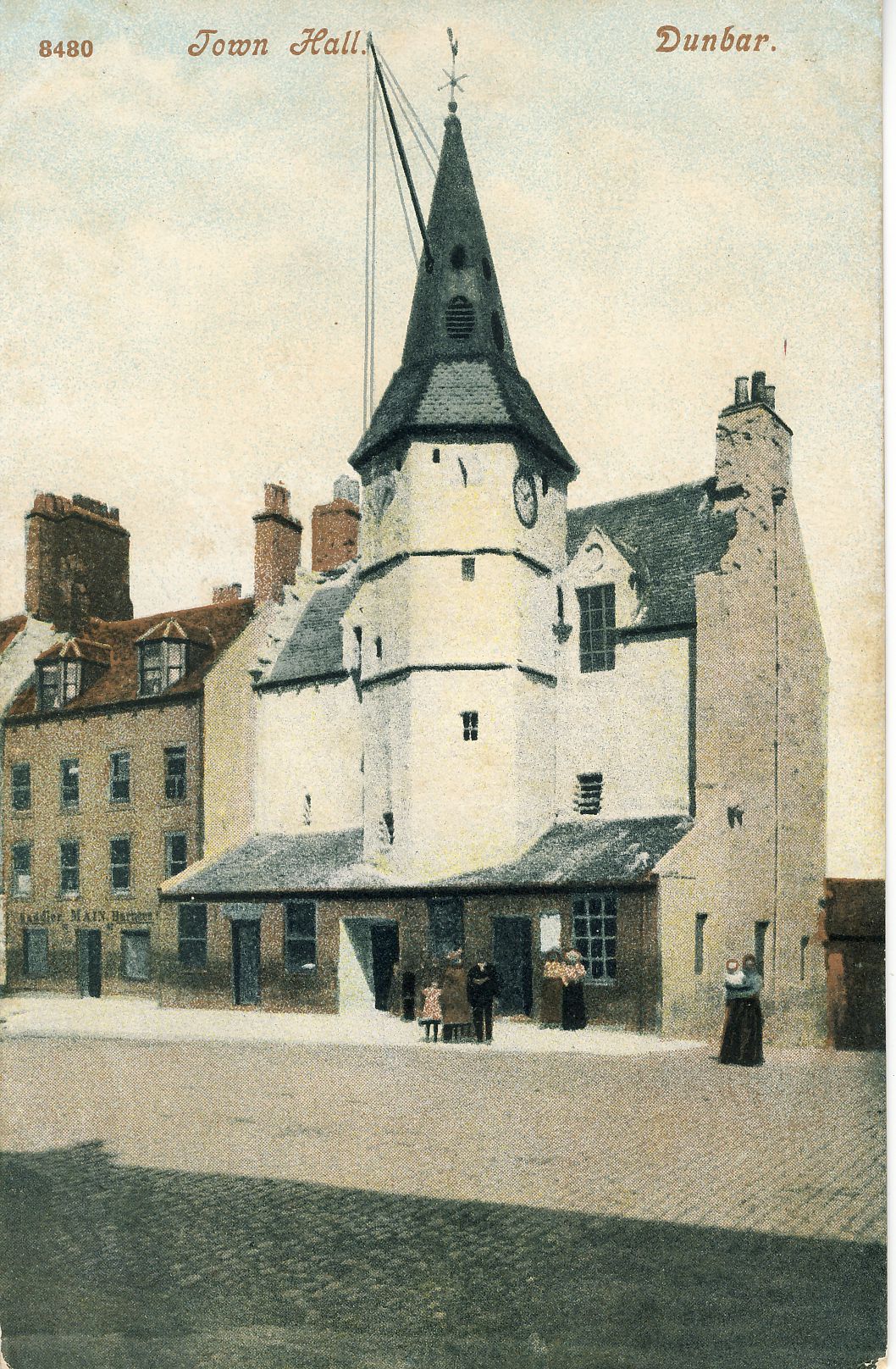The final talk in the DDHS 2024/2025 season was given by DDHS Secretary Pauline Smeed, with a good turnout on the night and an appreciative audience. Below are 3 images from the talk, with text below. Images and text by Pauline Smeed, with additional links by Dr James Herring.

Dunbar’s charter of 1603, granted by King James VI ratified earlier privileges granted by King David II but extended the powers held by Dunbar’s town council. A few years earlier King James had ordained that all burghs were to provide a prison.
‘…persons apprehended in future within our said burgh for their crimes and transgressions to call suits for making absents for fining malefactors both strangers and indwellers and of accusing and punishing those who transgress both those from outside and indwellers and of putting them to death according to the nature of their crimes and offences in conformity with the laws of our kingdom.’
The photo above is an early one of the Town House before the limewash covering and ‘luckenbooths’ (or small shops), were removed between 1911-13. The tenement on the left is the last recorded home of Dunbar’s executioner and was known as Blackness Tenement. This was replaced in 1928 by the current gallery and offices to the left of the older Town House, or Tolbooth building.

The cuffs shown in the photograph above were discovered around 25 years ago within the Town House. They remind us that the jail on the first floor was used for many years until the early 19th century and were used by the local police force who joined East Lothian Constabulary in the mid-19th century. By that time there were few prisoners held in the Town House, most offenders being sent to Haddington.

In May 1975 local town councils were replaced by regional councils. Local people lamented the fact that they could no longer stop the councillor on the High Street to make their complaint. The photo above shows the Town Council shortly before regionalisation. Members are grouped in the historic Council Chamber where the Burgh Council had met for over 400 years. The last Provost, Reginald James, is seated in the centre with his Town Clerk on his left, bailies and other office bearers. Today Dunbar’s Community Council continue to meet in the Chamber to discuss and assist with local issues and to liaise with East Lothian Council.

You must be logged in to post a comment.